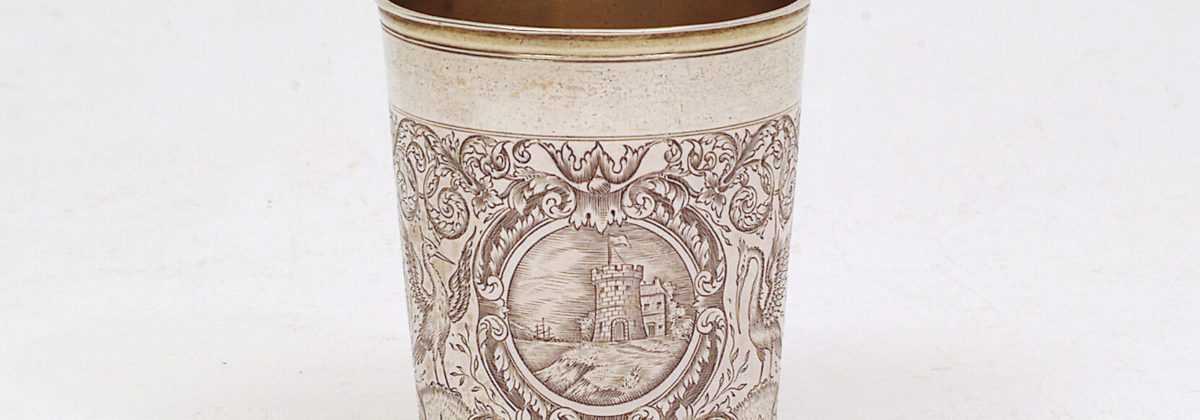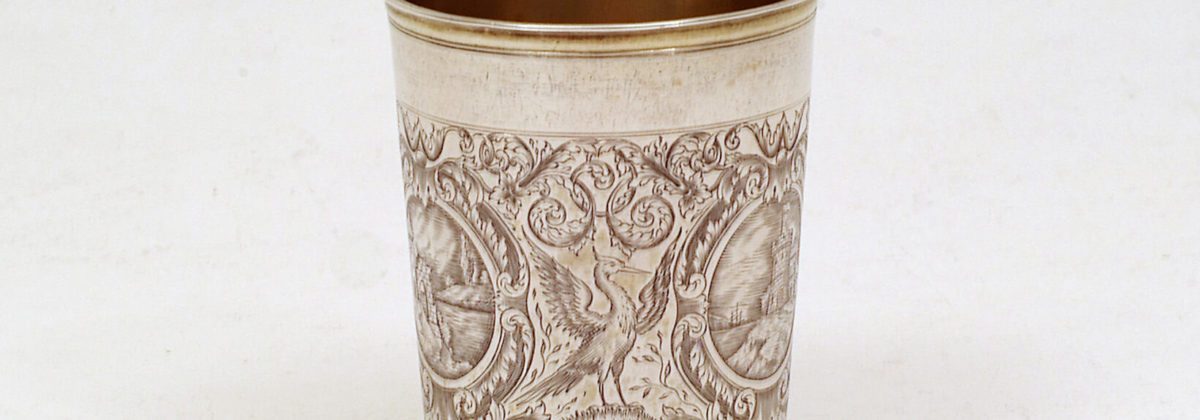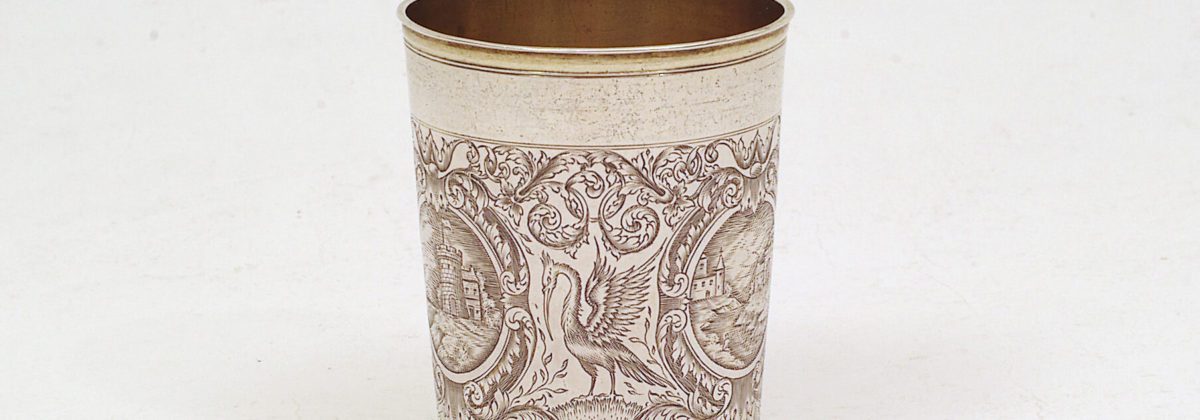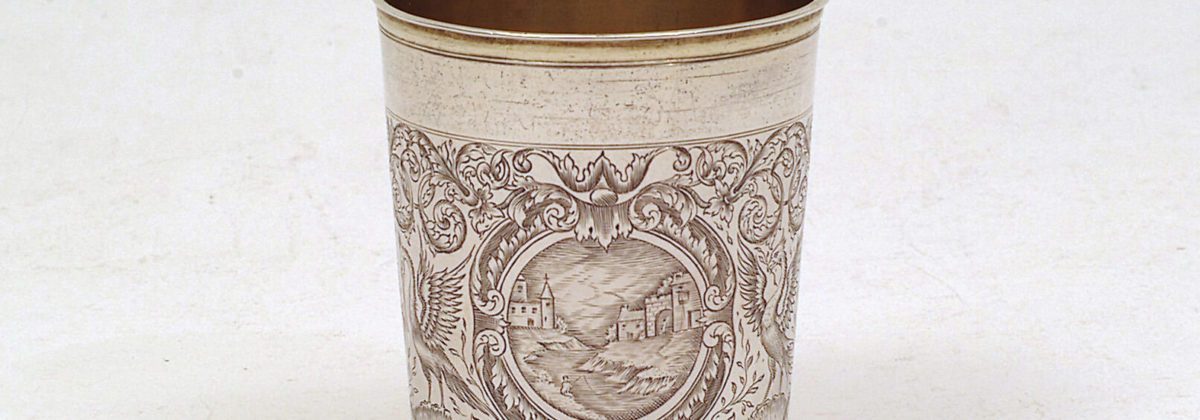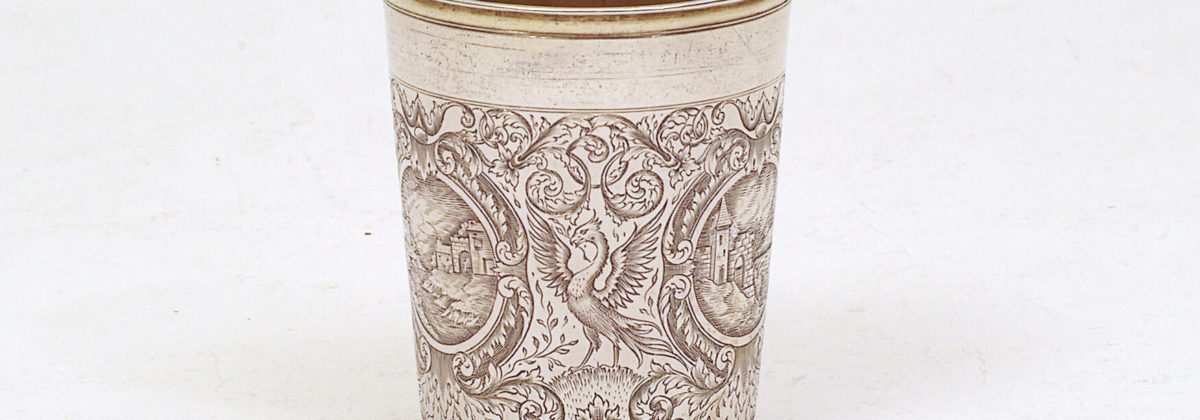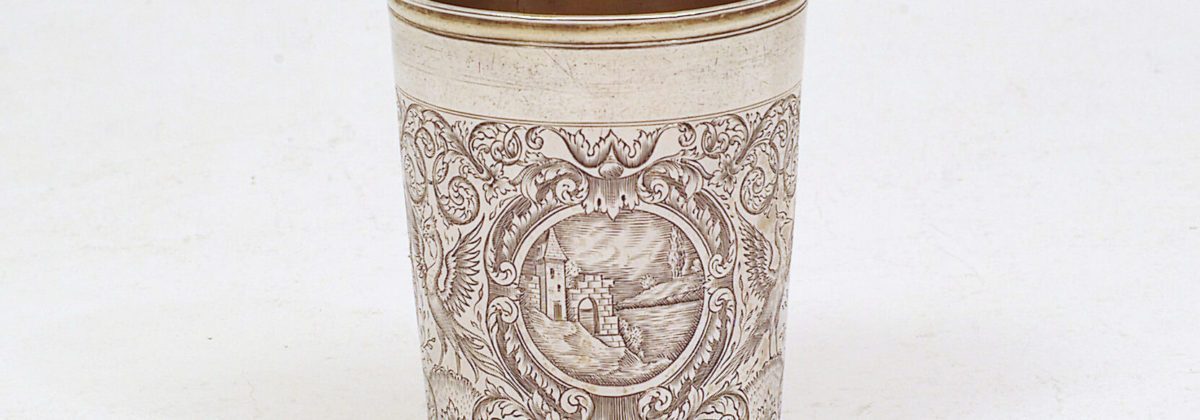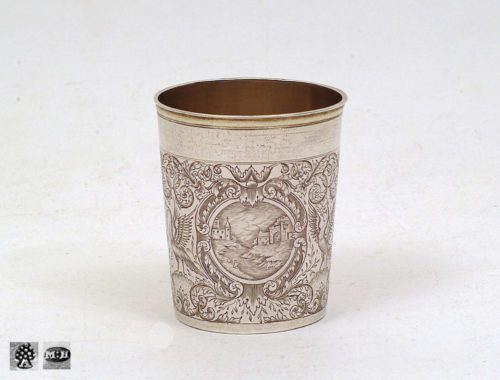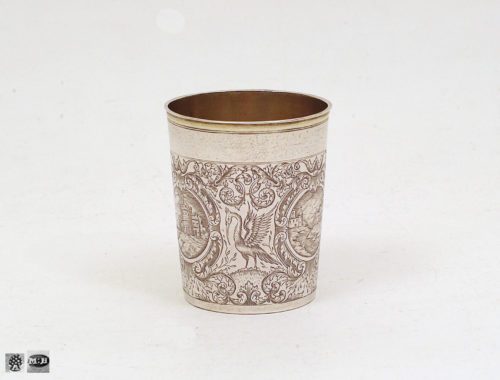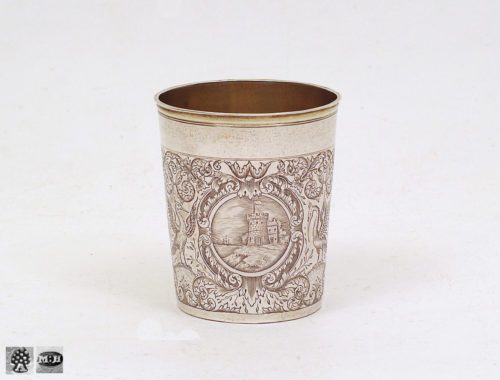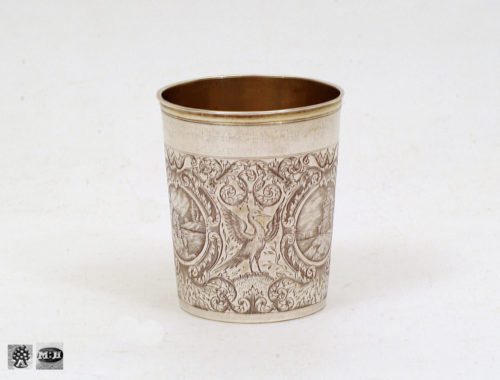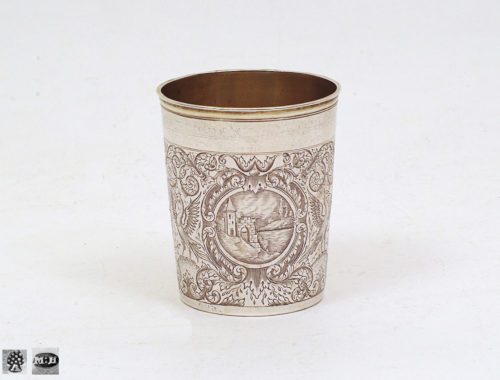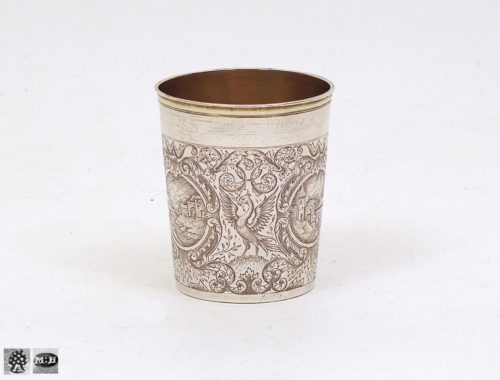Detailed description
Silver Partly-Gilt German Baroque Beaker with Elaborate Engraving
This silver, partly-gilt beaker has a conical shape, with profiled lip rim. Between two gilt rings above and below develops an elaborate, richly engraved decoration. The main theme is the three finely engraved cartouches showing architectural and river landscapes: The first depicts a town on a river and in the foreground a fisherman in action. The second shows an imposing tower with a flag at the top and a three-masts ship on the left in the water. Finally, the third cartouche shows a tower with a gate next to a river landscape. Interestingly enough, the beaker is also richly engraved between the cartouches with elaborate acanthus leaves and further adorned with three engraved, different birds with spread wings. The marks and the control zig-zig line are ligated on the bottom.
Landscape Scenes in Silver
The special feature of the beaker lies not only in the way it is worked and the beautifully preserved gilding, but also and above all in the three cartouches with landscapes surrounded by artistic engravings.
This silver beaker thus illustrates the increasing interest in landscape painting in the 17th century. While landscape painting from the Middle Ages to the Renaissance sought a connection to religious and mythological themes, the genre of landscape takes on a new dimension in the 17th century: it documents nature. This can be observed by Dutch painters for instance. Hercules Seghers (c. 1589-c. 1638), a pioneer of graphic art during the Golden Age of the Netherlands – highly appreciated and collected by Rembrandt (1606-1669) – was a pioneering 17th century landscape painter in this sense. Other pioneering painters of this genre were Albrecht Altdorfer (c. 1480-1538) and Joachim Patinir (c. 1480-1524).
French landscape painters such as Nicolas Poussin (1594-1665) created landscapes within the framework of the genre hierarchy as set up by the French Académie. Poussin in particular added poetic and heroic aspects to his landscapes. In spite of the hierarchy of genres, landscape painting developed during the 17th century into an independent, isolated genre no longer based on historical themes.
Silversmiths have adapted to the artistic development of their contemporaries. Decorative elements and new iconographic sources and models thus followed other artistic genres. In this context one can observe that many drinking vessels and other objects of the 17th century were decorated with architectural and other landscapes.
Maker
Michael Hueter was active as a silversmith in Augsburg from 1684 to 1717. The maker produced both silver tableware and representative objects. Typical for the second category of objects is a lavabo set of him exhibited in the Germanisches Nationalmuseum Nürnberg (see Klaus Pechstein et. Al., Schätze Deutscher Goldschmiedekunst von 1500 bis 1920 aus dem Germanischen Nationalmuseum, Berlin 1992, p. 338, no. 260. Fig. ibid. p. 339).


